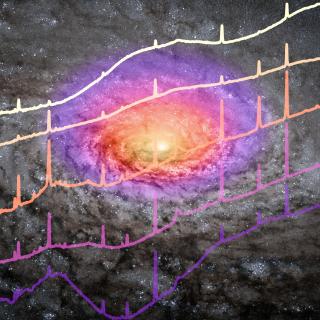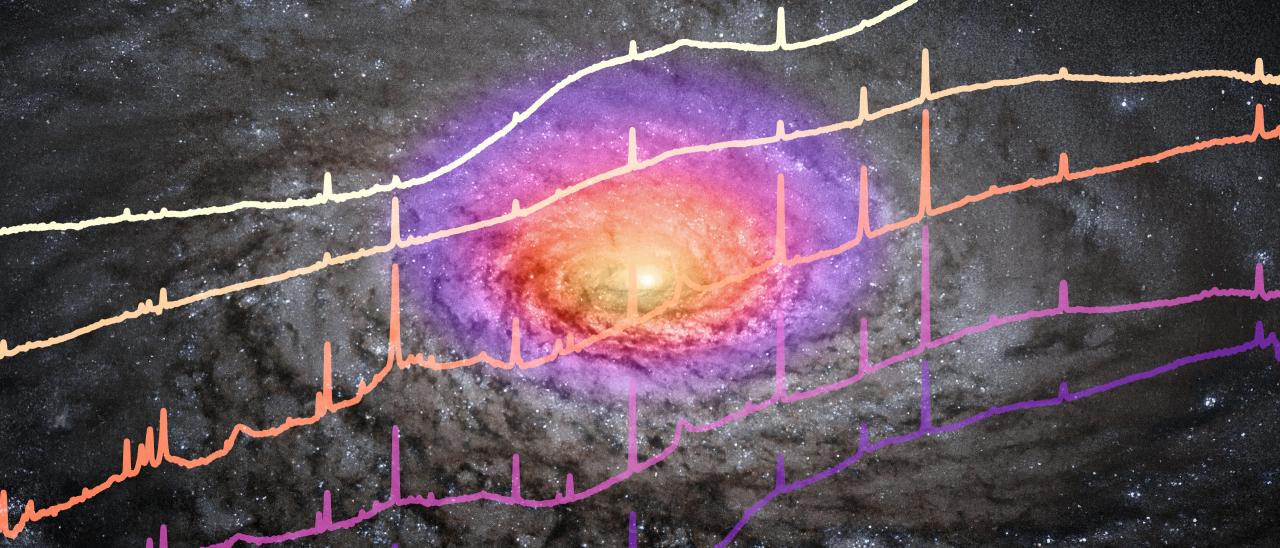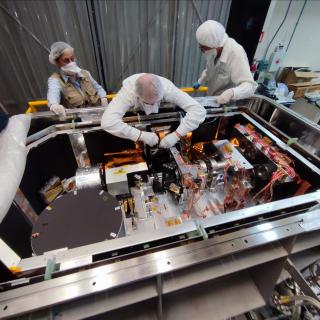Type 2 quasars (QSO2s) are active galactic nuclei (AGN) seen through a significant amount of dust and gas that obscures the central supermassive black hole and the broad-line region. Here, we present new mid-infrared spectra of the central kiloparsec of five optically selected QSO2s at redshift z ∼ 0.1 obtained with the Medium Resolution Spectrometer module of the Mid-Infrared Instrument (MIRI) aboard the James Webb Space Telescope (JWST). These QSO2s belong to the Quasar Feedback (QSOFEED) sample, and they have bolometric luminosities of log Lbol = 45.5 to 46.0 erg s−1, global star formation rates (SFRs) that place them above the main sequence, and practically identical optical spectra in terms of spectral shape and [OIII] luminosity, but their nuclear mid-infrared spectra exhibit an unexpected diversity in both continua and features. They show 9.7 μm silicate features going from emission (strength of S9.7 = 0.5) to relatively strong absorption (S9.7 = –1.0), and 18 and 23 μm silicates that are either in emission or flat (S18 = [0.2,0.0] and S23 = [0.1,0.0]). In addition, two of the QSO2s show absorption bands of CO, H2O, and aliphatic grains, indicating different levels of nuclear obscuration across the sample. Their [NeV]/[NeII] ratios range from 0.1 to 2.1 and [NeIII]/[NeII] from 1.0 to 3.5, indicating different coronal line and ionizing continuum strengths. They have warm molecular gas masses of 1–4 × 107 M⊙ and warm-to-cold gas mass ratios of 1–2%, with molecular gas excitation likely due to jet-induced shocks in the case of the Teacup (J1430+1339) and to UV heating and/or turbulence in J1509+0434. Finally, they show polycyclic aromatic hydrocarbon (PAH) emission features with equivalent widths ranging from less than 0.002 to 0.075 μm, from which we measure a larger contribution from neutral molecules (PAH 11.3/6.2 = 1.3–3.4) and SFRs ≤ 3–7 M⊙ yr−1. This unprecedented dataset allowed us to start exploring the role of various AGN and galaxy properties in some of the spectral differences listed above. Larger samples observed with JWST/MIRI are now required to fully understand the diversity of QSO2s’ nuclear mid-infrared spectra.




